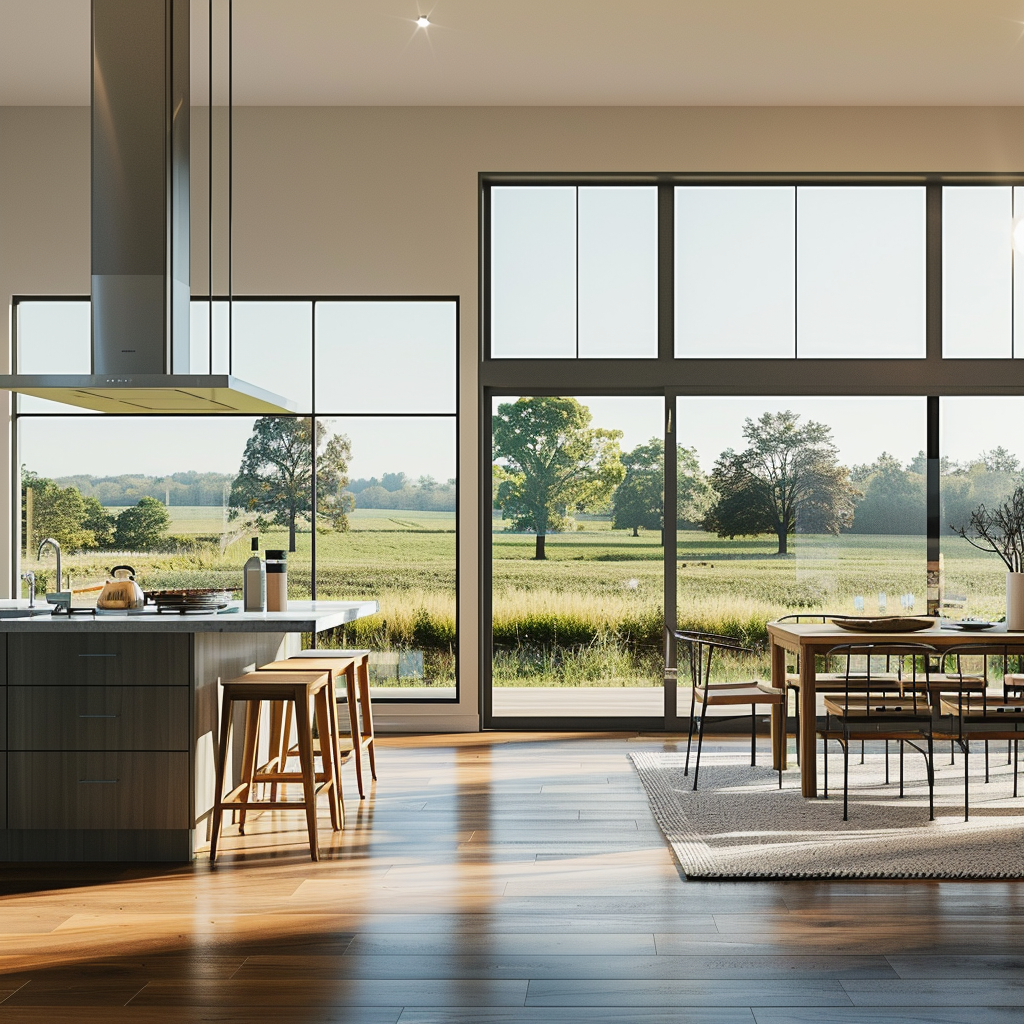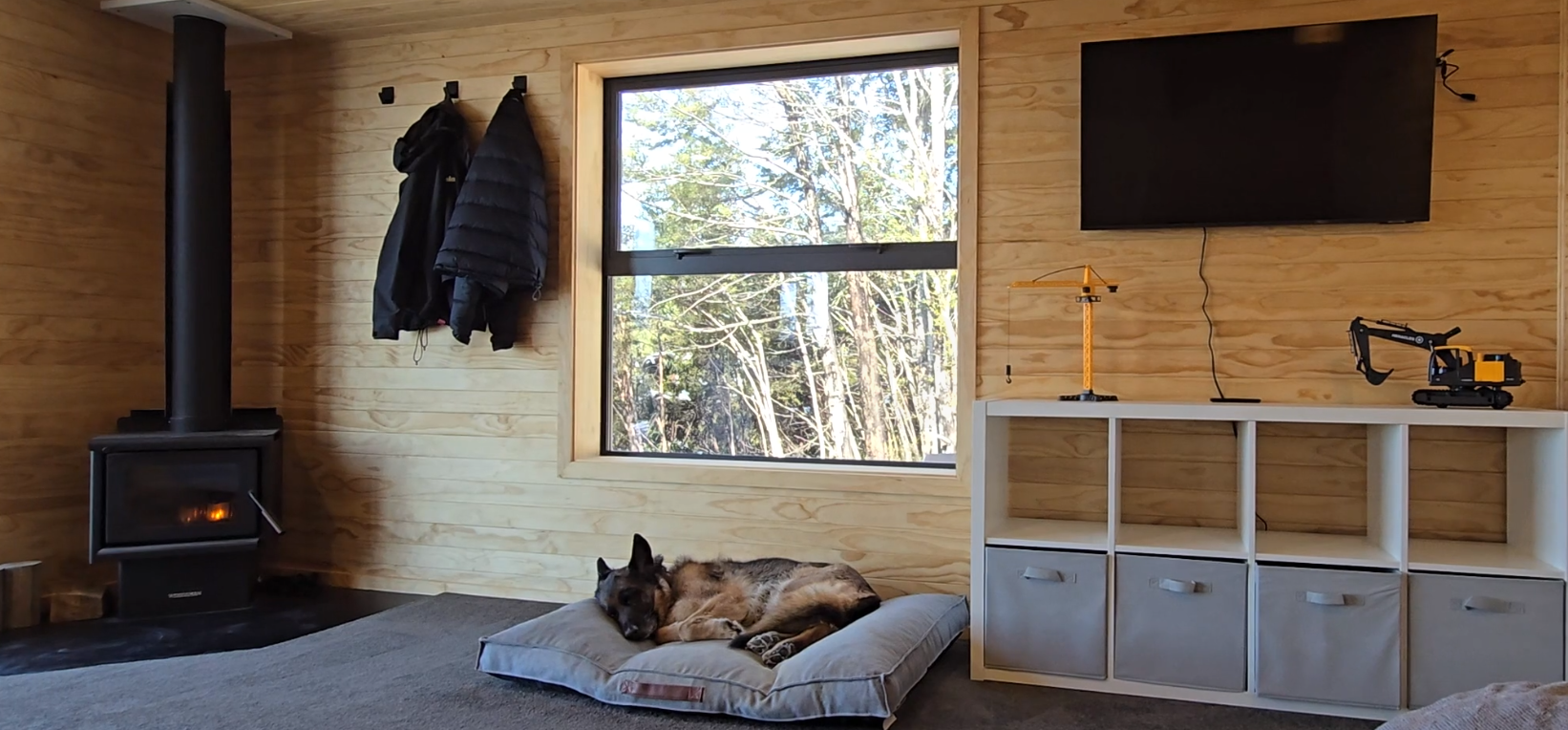Purchasing a home involves more than just the initial investment. It's important to also think about the long-term maintenance that comes with it. Long-term maintenance includes all the tasks needed to keep a property in good condition over time, such as fixing things that break and updating systems to meet current standards. This aspect of homeownership is crucial because it can affect your financial planning and quality of life.
In this article, we will explore the differences between maintaining new homes and older houses. Both options have their own advantages and challenges. New constructions offer modern conveniences and updated designs, while older homes have a sense of history and character.
Each choice comes with its own things to think about:
- For new homes, you should consider the latest technology and energy efficiency.
- With old houses, think about classic design elements and the possibility of lower upfront costs.
Whether you're attracted to the sleekness of a brand-new home or the charm of an older one, knowing what it takes to maintain them in the long run will help you make a well-informed decision that suits your lifestyle and future plans.
Advantages and Disadvantages of New Homes
Advantages of New Homes
When you consider the purchase of a new home, you are often met with an array of modern conveniences and advanced technologies that are designed to make life easier. From smart home systems that allow you to control temperature and lighting from your phone to integrated home security features, these advancements contribute significantly to simplifying long-term maintenance processes.
1. Energy Efficiency and Quality Materials
- Updated Insulation: New homes typically incorporate the latest in insulation technology, resulting in more efficient temperature regulation.
- High-Quality Materials: Builders often use cutting-edge materials that are durable, longer-lasting, and require less upkeep over time.
- Cost Savings: These features can lead to substantial energy savings, reducing utility bills and long-term financial strain for homeowners.
Because new homes come with state-of-the-art systems, the immediate investment required for major repairs or replacements is usually less compared to older properties. This can be a significant advantage for you if you prefer a home that is move-in ready without the need for immediate upgrades.
2. Sustainable Building Practices
- Environmentally Friendly: Features such as solar panels, energy-efficient appliances, and water-saving fixtures not only reduce your carbon footprint but also trim down your monthly expenses.
- Long-Term Sustainability: Sustainable practices ensure that homes remain cost-effective and environmentally responsible in the long run.
New homes are constructed to meet current safety standards which offer occupants a sense of security. The adherence to these regulations often includes fire-resistant materials, hard-wired smoke detectors, and robust locking systems, all of which serve to decrease the likelihood of maintenance emergencies.
3. Design and Layout
- Spacious Layouts: Many new builds provide open floor plans and additional space which can accommodate future needs or changes in lifestyle.
- Flexibility in Use: With extra rooms or designated office spaces, it is easier to adapt your home to fit changing requirements without significant renovations.
Disadvantages of New Homes
While there are numerous advantages associated with new homes, it's important to consider some potential drawbacks as well.
1. Initial Costs
The upfront cost of purchasing a new home is often higher than that of an older property. This price tag may limit funds available for other priorities or immediate customisations you may wish to make upon moving in.
2. Outdoor Space Limitations
In urban areas where land availability is scarce, new homes may feature smaller yards or garden spaces. If extensive landscaping or outdoor living space is high on your priority list, this could influence your decision-making process.
3. Location Concerns
Frequently situated in suburban areas or on the outskirts of cities, new developments might necessitate longer commutes for homeowners who work downtown or prefer quick access to urban amenities.
It's crucial to perform thorough inspections and conduct comprehensive research during the buying process. Ensuring high construction quality in a new home can mitigate the risk of encountering unforeseen maintenance issues down the line.
2. Disadvantages of New Homes
When you compare the pros and cons of new homes, it's clear that there are a few things to think about, especially when it comes to ongoing upkeep. While new home constructions offer many modern conveniences and potential savings on future maintenance, they also have some downsides.
1. Initial Cost Considerations
One significant factor is the initial cost of purchasing a new home, which is typically higher than that of an older property. This can affect your budget for maintenance in the early years of homeownership, as funds may be tighter after accounting for the premium price of a new construction.
2. Land Availability and Outdoor Space
In many urban areas, land is limited. As a result, new homes often have smaller yards or gardens compared to older houses. For those who want large outdoor spaces for gardening, entertaining, or simply enjoying nature, this can be a significant drawback.
3. Location and Commute
New developments often spring up in suburban areas or on the outskirts of cities. This change in location can mean longer commutes and less access to city amenities like restaurants, malls, and entertainment options.
4. Quality Assurance
Despite strict safety standards in new constructions, there's always a chance that the quality of building materials or workmanship may not meet expectations. It’s important to do thorough inspections and research during the buying process to minimise future maintenance problems caused by construction defects.
Focusing on these disadvantages isn't meant to discourage you from considering a new home but rather to give you a complete picture that helps with your decision-making. By understanding both the pros and cons, you can make an informed choice about which type of home suits your long-term maintenance goals and lifestyle preferences better.
In contrast to new homes, older houses have their own set of things to think about. The next section will explore the pros and cons of older properties and how they compare in terms of long-term maintenance needs.
Advantages and Disadvantages of Old Houses
Advantages of Old Houses
1. Unique Architectural Styles and Historical Charm
Old houses often have a special look and feel that new buildings can't replicate. They may have:
- Original woodwork, detailed moldings, and vintage fixtures that tell a story
- Strong construction methods from the past that have held up well over time
- Interesting architectural features like stained glass windows, traditional fireplaces, and decorative plasterwork
These elements often become the focal point of the home, providing a one-of-a-kind beauty that homeowners can take pride in.
2. Mature Landscaping
The outdoor areas of old houses usually feature mature landscaping with:
- Large trees that offer shade and privacy
- Perennial gardens that bloom every year without replanting
- Hedges and shrubs that create natural boundaries and enhance curb appeal
While this established landscaping adds to the charm, it's important to remember that it requires ongoing maintenance such as pruning, mulching, and pest control to keep it looking its best.
3. Established Neighbourhoods
Old houses are often found in Neighbourhoods that have been around for a while, offering:
- Convenient access to amenities like local shops, restaurants, parks, and schools
- A strong sense of community with Neighbours who have deep roots in the area
- Streets lined with unique homes instead of identical-looking ones
These factors can greatly enhance everyday life, fostering connections among residents and creating a welcoming atmosphere.
4. Financial Considerations
From a financial perspective, old houses may have some benefits:
- Generally lower purchase prices compared to newly constructed homes
- Potential for buyers to increase property value through renovations over time
- Possibility of qualifying for grants or tax incentives if the home is designated as historic
Choosing an older home often allows for more flexibility in budgeting for maintenance and desired updates.
Disadvantages of Old Houses
1. Long-term Maintenance
Challenges Owning an older home has its challenges. Here are a few things to think about:
- The likelihood of outdated electrical systems, plumbing, or heating that may require expensive upgrades
- Structural problems like foundation cracks or deteriorating roofs that need immediate attention
- The potential presence of lead paint or asbestos from past construction practices, which would need professional remediation
It's important for potential buyers to thoroughly inspect these homes before purchasing to avoid unexpected maintenance costs later on.
2. Energy Efficiency Concerns
Despite their appeal, old houses might not be very energy efficient because:
- They may lack modern insulation, leading to higher heating and cooling expenses
- Older windows often don't provide good thermal insulation compared to newer options
- Historic preservation rules sometimes limit the extent to which energy-saving changes can be made
Owners of old houses often have to find creative ways to balance preserving the home's character with improving energy efficiency.
3. Renovation Restrictions
Making renovations to an older home comes with its own considerations:
- Local regulations may place restrictions on modifications you can make to a historic property
- Renovations could uncover hidden problems like water damage or structural weaknesses that weren't initially apparent
- Matching new materials with existing ones can be challenging and sometimes more costly due to rarity or specialised craftsmanship
Those who take on renovation projects in old homes should be prepared for unexpected issues and have a backup plan for additional expenses or extended timelines.
2. Disadvantages of Old Houses
Shifting our focus to old houses, their characteristics can significantly influence long-term maintenance requirements. The charm and character that come with these properties are often accompanied by concerns that new homeowners must be prepared to address.
1. Aging Construction
One of the primary challenges with older homes is the aging nature of their construction. Over time, buildings settle, materials degrade, and what once was a solid structure may now present issues. This natural process can lead to structural concerns such as foundation cracks or roof deterioration, necessitating extensive repairs that can be costly and time-consuming.
2. Outdated Layouts
Many vintage homes were designed with floor plans that fit past lifestyles, which might not align with contemporary preferences for open-plan living spaces. Adapting an older property to today's tastes often requires significant remodeling efforts, including knocking down walls or extending the living area to create a more fluid layout.
3. Insulation and Energy Efficiency
When considering an old house, you must pay attention to insulation methods and heating systems in place. These properties were built before advancements in energy efficiency; therefore, you could face higher utility bills. Upgrades are essential for improving energy performance, such as installing double-glazed windows or adding modern insulation solutions to walls and attics.
4. Safety Hazards
Old homes may Harbour potential safety hazards like outdated electrical systems incapable of handling modern appliances' demands or toxic materials such as lead paint and asbestos. Addressing these issues often involves specialised remediation services, which add another layer of expense and effort in the maintenance of these homes.
5. Maintenance Budget
Preserving an old house requires dedication and a proactive approach to maintenance. It's wise to establish a budget for regular upkeep tasks like painting, repairing weathered fixtures, or servicing older heating systems to ensure the home remains safe and comfortable while retaining its value.
By understanding these aspects of older properties, you can better prepare for the responsibilities that come with owning a piece of history. Responsible homeownership includes recognising potential setbacks and taking preemptive measures to safeguard against future problems while enjoying the unique advantages old houses offer.
Key Factors to Consider in the Long-Term Maintenance of Homes
When you acquire a home, whether it's brand new or has seen a few decades, understanding the factors that affect long-term maintenance is vital. These elements are crucial in planning for the future and ensuring that your home remains a safe and comfortable place to live.
Age and Condition of the Home
The age of your property is an indicative factor of potential maintenance needs. Older homes may present challenges such as wear on materials or outdated systems needing upgrades. However, it's crucial to recognise that the age is not necessarily a standalone indicator of condition or quality. Homes built in different eras have distinct characteristics and potential issues; therefore:
- Assessing the overall condition takes precedence over just considering the age. A well-preserved older home might outshine a poorly maintained newer one.
- Regular inspections can reveal the true state of a property, regardless of its age. Look for signs such as structural integrity, roof condition, and functioning systems.
Construction Quality
Quality construction stands the test of time. When evaluating a home’s long-term maintenance needs, give attention to:
- Initial construction quality, which often dictates longevity and durability.
- Builders' reputation and the materials used during construction—these play pivotal roles in ensuring fewer problems down the line.
- Custom-built homes versus mass-produced houses could differ significantly in terms of craftsmanship and attention to detail.
In newer homes, you expect cutting-edge materials and modern techniques designed for longevity. Manufacturers provide warranties that serve as a testament to their confidence in product durability. Energy-efficient appliances, HVAC systems, and sustainable materials are not only better for the environment but also reduce ongoing costs.
In contrast, historic homes might contain rare or irreplaceable materials that require specialised care. Hand-crafted features add character but can also present unique challenges when they need repair or restoration.
Long-Term Maintenance Planning
For any homeowner, setting up a plan for long-term maintenance is necessary:
- Create a maintenance schedule based on the specific needs of your home’s age and construction type.
- Factor in seasonal changes that might affect different parts of your property differently—a beachfront home will have different concerns than a mountain cabin.
- Consider creating a reserve fund for unexpected repairs, so you’re not caught off guard by unforeseen issues.
Moreover, when planning long-term maintenance:
- Stay proactive rather than reactive—regular upkeep can prevent larger problems from developing.
- Investigate any historical renovation restrictions if you own an older house—this can impact your ability to make changes or repairs.
- Embrace technology advancements that can help monitor home health, like smart sensors that detect water leaks or structural shifts.
By keeping these considerations at the forefront of your home ownership journey, you'll be better equipped to handle whatever maintenance tasks come your way. Remember to stay vigilant about your home's current state and proactive about its future needs; this approach will serve you well in preserving your investment for years to come.
Design and Materials
When it comes to maintaining a home over time, the design and materials used are crucial. They can determine how easy or difficult it will be to take care of your property in the future.
Architectural Styles: Finding the Right Balance
While it's tempting to choose a home with a unique architectural style, it's important to consider the maintenance implications that come with it. Here are a few examples:
- Victorian-style Home: These homes are known for their intricate woodwork and ornate details. While they may look beautiful, they require regular upkeep to prevent damage.
- Modern Minimalist Design: On the other hand, a home with clean lines and simple features is generally easier to maintain.
Understanding Roof Types and Maintenance Needs
The type of roof you have can also impact its maintenance requirements. Here are three common roof styles and what you need to know about them:
- Flat Roofs: If not properly drained, flat roofs can accumulate water, leading to leaks over time.
- Pitched Roofs: These roofs have a steeper slope, allowing water to drain more easily. However, it's still important to inspect the shingles or tiles regularly for any damage.
- Metal Roofs: While metal roofs are durable, they can get dented by hail or falling branches.
Choosing the Right Flooring Materials
When it comes to flooring, durability is key. Here are some popular options along with their pros and cons:
- Hardwood: Hardwood floors offer a timeless look and feel. However, they can get scratched or worn over time and may require refinishing.
- Laminate: Laminate flooring is a cost-effective alternative to hardwood. It's durable but can be damaged by moisture if not properly sealed.
- Tile: Tile is an excellent choice for areas with high moisture, such as bathrooms. However, the grout lines between tiles may need occasional resealing.
- Carpet: Carpeting can create a cozy atmosphere, especially in bedrooms or living rooms. However, it can be challenging to keep clean and may need to be replaced more frequently in high-traffic areas.
Exploring Exterior Building Materials
The materials used on the exterior of your home not only impact its appearance but also its ability to withstand the elements. Here are three common options:
- Brick: Brick is a low-maintenance and durable choice for exterior walls. However, over time, the mortar joints between bricks may need to be repointed.
- Vinyl Siding: Vinyl siding is resistant to rot and easy to clean. However, it can become brittle and crack under extreme temperatures.
- Wood Siding: Wood siding offers natural beauty but requires regular maintenance such as staining or painting to prevent decay.
The Importance of Choosing Weather-Resistant Materials
In areas prone to extreme weather conditions, it's crucial to select materials that can withstand these challenges. For example:
- If you live in a coastal region with high humidity, using treated lumber for your deck can help prevent moisture damage and extend its lifespan.
- In regions with frequent storms or heavy snowfall, opting for impact-resistant windows can provide added protection against wind and debris.
The Role of Energy-Efficient Features
Energy efficiency is another factor to consider when thinking about long-term maintenance. Features such as:
- Energy-Efficient Windows: These windows help reduce heat transfer, keeping your home cooler in summer and warmer in winter. This not only lowers your energy bills but also reduces the strain on your HVAC system.
- Proper Insulation: Good insulation throughout your home helps maintain a consistent indoor temperature, reducing the need for excessive heating or cooling.
By investing in these energy-saving features, you can create a more comfortable living environment while also minimising potential issues with your heating or cooling systems.
The Bottom Line: Making Informed Choices for Long-Term Maintenance
When it comes to long-term maintenance, remember that both the age of your home and the quality of its construction will have an impact on its durability. However, by considering these factors during the design and construction phases, you can set yourself up for more manageable maintenance responsibilities down the line.
Other Factors to Consider
When evaluating long-term maintenance for your home, whether new or old, certain factors play a crucial role in determining the care and costs you will encounter down the line. These considerations are pivotal for a comprehensive understanding of what it takes to maintain a property over time.
Landscaping
- Well-maintained gardens can prevent structural issues like water damage by ensuring proper drainage away from the home's foundation.
- Regular care for trees and shrubs is essential to deter pests that could otherwise find their way into your home.
- Consider the type of vegetation; some plants require less upkeep, reducing both time and financial burden.
Utility Costs
- Investigate energy efficiency when assessing a home. Features such as double-glazed windows or solar panels contribute to lower energy bills.
- Water expenses correlate with landscaping requirements. Opting for drought-resistant plants can lead to significant savings.
- Evaluate the insulation quality of a house, as it directly impacts heating and cooling costs.
Safety Regulations and Building Codes
- Stay informed about the building codes in your area. Compliance ensures safety and avoids the cost of retrofitting to meet current standards.
- Check if there are any upcoming regulations that would necessitate future updates or renovations to your property.
Maintenance Costs
- Factor in both routine maintenance expenses and potential big-ticket repairs when budgeting for a home.
- Be aware that certain design features in older homes may be costly to update or repair due to their age or rarity of materials.
Anticipating these factors plays an integral part in making an informed decision on a property purchase. They help you estimate not just the present-day value but also the future commitments involved in owning a home. By considering these aspects, you ensure preparedness for what lies ahead, keeping your home safe, efficient, and enjoyable for years to come.
Understanding the long-term maintenance of new homes requires weighing the benefits and potential drawbacks of both new and old properties. The decision should reflect personal preferences, lifestyle, and financial considerations.
- New homes offer modern conveniences, energy efficiency, and adherence to current safety standards which can streamline maintenance efforts.
- Old houses bring historical character and mature landscaping but might come with more upkeep.
- Financial factors play a crucial role; initial costs versus ongoing maintenance expenses must be balanced.
Before making a commitment, it is wise to:
- Reflect on what features are most important for your home environment.
- Consider how much time and money you are willing to invest in home maintenance.
Your choice will shape your living experience and impact your financial future. Take the time to understand each aspect thoroughly to ensure that your home meets your long-term ownership aspirations.
Keywords for Internal Search:
long-term home maintenance, maintaining new homes, new versus old home maintenance, energy efficiency in new homes, sustainability in home design, modern home maintenance challenges, cost of maintaining new homes, updating home systems, smart home maintenance, residential maintenance planning, advantages of new homes, disadvantages of new construction, home maintenance costs, sustainable building practices, home insulation upgrades, maintaining home aesthetics, financial planning for home maintenance, long-term property upkeep, quality materials in home construction, managing home renovations, initial costs of new homes, outdoor space considerations, suburban home maintenance, urban vs suburban living, quality of life in new homes






